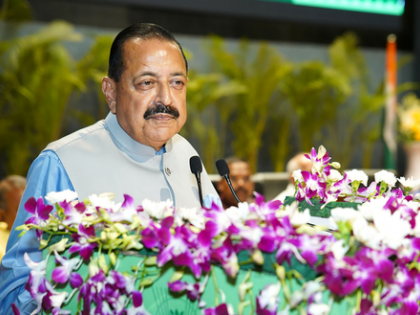Ground testing, Crew Module Phase-1 checks complete for Gaganyaan’s 1st uncrewed flight: Govt
By IANS | Updated: July 23, 2025 14:39 IST2025-07-23T14:30:32+5:302025-07-23T14:39:27+5:30
New Delhi, July 23 In a significant milestone, the ground testing and Crew Module’s phase-1 checks are completed ...

Ground testing, Crew Module Phase-1 checks complete for Gaganyaan’s 1st uncrewed flight: Govt
New Delhi, July 23 In a significant milestone, the ground testing and Crew Module’s phase-1 checks are completed for the first uncrewed flight of the Gaganyaan human spaceflight mission, said Jitendra Singh, Union Minister of State (Independent Charge) for Science and Technology, in the Parliament’s ongoing Monsoon Session.
In a written reply to the Rajya Sabha, Singh shared the status and key milestones achieved in the ISRO-led Gaganyaan programme.
“The development and ground testing of the Human Rated Launch Vehicle (HLVM3) is completed,” said Singh.
For the first uncrewed mission (known as G1), “the C32-G stage and CES motors have been realised. HS200 Motors and CES Fore end up to Crew Module Jettisoning Motor stacked. Crew Module and Service module structure realised. Crew Module Phase-1 checks completed,” he added.
Singh said that the propulsion systems for the Crew Module and Service Module have also been developed and tested.
Under the Crew Escape System (CES), “five types of motors have been developed and static tested”.
The infrastructure established includes Orbital Module preparation facility, Gaganyaan Control Centre, Gaganyaan Control facility, Crew training facility, and Second Launch pad modifications.
“A Test Vehicle developed for validating CES and flight tested in TV-D1. Activities are in progress for TV-D2 and IADT-01,” Singh said.
Further, for flight operations and the communication network, the ground network configuration has been finalised. IDRSS-1 feeder stations and terrestrial links are also established.
As part of the crew recovery operations, recovery assets have been finalised and a recovery plan worked out, the Minister said.
“The human spaceflight programme is aimed at fulfilling the aspirations of an established space-faring nation. The technological and manufacturing capabilities towards the goal of ‘Viksit Bharat’ will hinge on a transformative shift in the national research and technology development landscape,” Singh said.
The long-term vision of the Indian Human Space Programme includes Bharatiya Antariksha Station (BAS) by 2035 and Indian Moon Landing by 2040.
ISRO aims to “establish five modules of Bharatiya Antariksha Station (BAS) by 2035, towards which approval for development of the first module of BAS is obtained,” Singh said.
The mission aspects, configuration of launch vehicle and orbital module systems to land an Indian on the Moon by 2040, "have been taken up”.
“The training modules, including incremental training for the ongoing Gaganyaan programme and proposed landing of an Indian on the Moon, are in line with the requirement of mission timelines,” Singh said.
Disclaimer: This post has been auto-published from an agency feed without any modifications to the text and has not been reviewed by an editor
Open in app